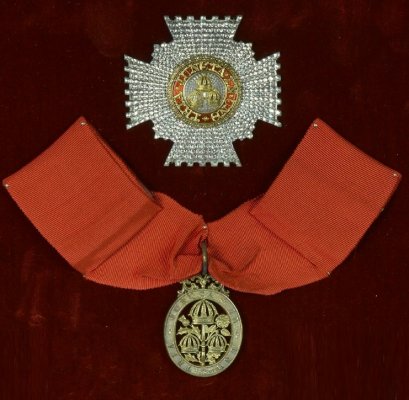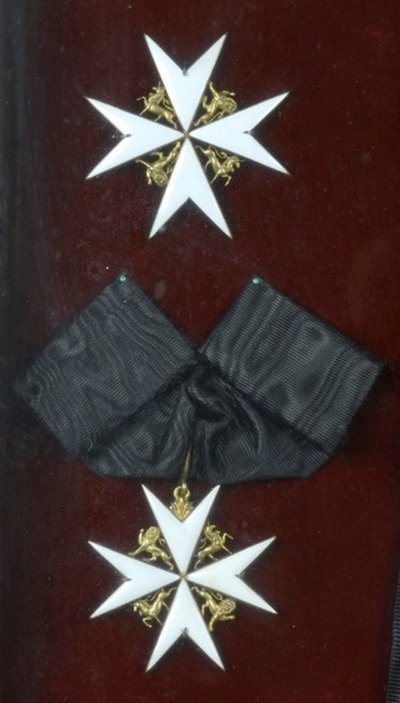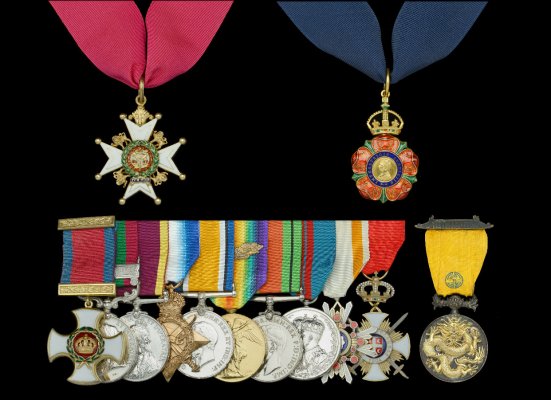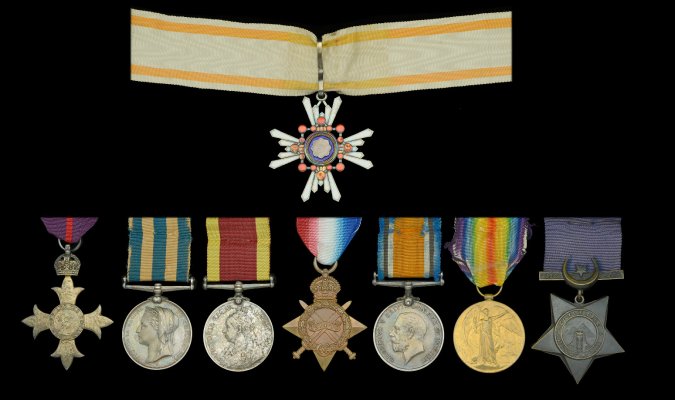Вы используете устаревший браузер. Этот и другие сайты могут отображаться в нём некорректно.
Вам необходимо обновить браузер или попробовать использовать другой.
Вам необходимо обновить браузер или попробовать использовать другой.
Японцы на Англичанах
- Автор темы JapanX
- Дата начала
Третье сокровище на капитана королевского военно-морского флота
https://ak-group.ru/forum/showthread.php?p=315662
https://ak-group.ru/forum/showthread.php?p=315662
Группа Гая Реймента с третьим сокровищем из 1920 года
https://ak-group.ru/forum/showthread.php?t=22828
https://ak-group.ru/forum/showthread.php?t=22828
Вложения
Oneman
Местный
Награды подзащитного -
An inter-War C.B. and Great War ‘Mesopotamia’ C.I.E., D.S.O. group of 13 awarded to Major-General R. S. St John, 40th Pathans and 20th (Brownlow’s) Punjabis, Indian Army
The Most Honourable Order of the Bath, C.B. (Military) Companion’s neck badge, silver-gilt and enamels; The Most Eminent Order of the Indian Empire, C.I.E., Companion’s 3rd type neck badge, gold and enamels; Distinguished Service Order, G.V.R., silver-gilt and enamels, with integral top ribbon bar; India General Service 1895-1902, 1 clasp, Punjab Frontier 1897-98 (Lieut. R. S. St. John 40th Bl. Infy.); China 1900, no clasp (Lieutt. R. S. St John 40th Punjab Infy.); 1914-15 Star (Maj. R. S. St. John, 20/Infy.); British War and Victory Medals, with M.I.D. oak leaves (Lt-Col. R. S. St. John.); Defence Medal; Delhi Durbar 1911, silver; Japan, Order of the Sacred Treasure, 5th Class breast badge, silver, gilt and enamels; Serbia, Order of Karageorge, 4th Class breast badge with Swords, silver, gilt and enamels, connecting ring between badge and crown replaced with wire; U.S.A., Military Order of the Dragon (Lieut. R. S. St. John 40th Pathans No. 727)
Биография -
Richard Stukeley St John was born on 15 January 1876, second son of R. F. St John and Julia Louisa, daughter of Rev. William Churchill. He was first commissioned 2nd Lieutenant on the Unattached List, 22 January 1896, and appointed to the Indian Army (Staff Corps) on 11 April 1897. He was appointed Officiating Wing Officer, 40th Pathan Regiment, Bengal Infantry, on 2 August 1897, and promoted to Lieutenant on 11 April 1898. Appointed Double Company Officer, 40th Bengal Infantry, attached 20th Punjab Infantry as officiating Double Company Officer (temporary), 14 June 1900; on Staff of China Field Force as Field Intelligence Officer, 1 September 1901; Aide-de-Camp, China Field Force, 1 October 1902 to July 1903; Captain, 22 January 1904; Officiating Officer Adjutant, 20th Infantry (Duke of Cambridge Own - Brownlow’s Punjabis), 6 May 1904; Staff College, Quetta, June 1907 to October 1908; Double Company Commander, 3 October 1908; Staff Captain, Allahabad Brigade, 10 February 1909; D.A.A. & Q.M.G., Karach Brigade, 1 June 1911; Major, 22 January 1914; Brigade Major, 22 May to 27 July, 1915; Temporary Commandant, 20th Bengal Infantry, 10 October 1915 to early 1916; A.Q.M.G. Indian Expeditionary Force ‘D’, 9 March 1916 to 7 June 1917; Lieutenant-Colonel, 3 June 1916; Embarkation Commandant, Bombay Brigade, June 1917 to November 1919; Second in Command, 20th Bengal Infantry, 27 May 1918; Commandant, Administrative Base and Lahore Brigade Area, November 1919 to March 1921; Commander, Lahore Brigade Area, November 1922 to May 1926; D.A & Q.M.G., Northern Command, 2 April 1924; Major-General, 26 March 1926; Brigade Commander, 13th Indian Light Infantry Brigade, 17 May to 3 November, 1926; retired 1929. India and China Medals; Japanese Order of the Sacred Treasure; served European War 1914-18 (despatches, D.S.O.); Serbian Order of Karageorge (with crossed swords). Major-General Richard St John died on 6 June 1959.
Сокровище 5
Order of the Sacred Treasure, 5th Class, permission to wear granted 5 April 1904.
An inter-War C.B. and Great War ‘Mesopotamia’ C.I.E., D.S.O. group of 13 awarded to Major-General R. S. St John, 40th Pathans and 20th (Brownlow’s) Punjabis, Indian Army
The Most Honourable Order of the Bath, C.B. (Military) Companion’s neck badge, silver-gilt and enamels; The Most Eminent Order of the Indian Empire, C.I.E., Companion’s 3rd type neck badge, gold and enamels; Distinguished Service Order, G.V.R., silver-gilt and enamels, with integral top ribbon bar; India General Service 1895-1902, 1 clasp, Punjab Frontier 1897-98 (Lieut. R. S. St. John 40th Bl. Infy.); China 1900, no clasp (Lieutt. R. S. St John 40th Punjab Infy.); 1914-15 Star (Maj. R. S. St. John, 20/Infy.); British War and Victory Medals, with M.I.D. oak leaves (Lt-Col. R. S. St. John.); Defence Medal; Delhi Durbar 1911, silver; Japan, Order of the Sacred Treasure, 5th Class breast badge, silver, gilt and enamels; Serbia, Order of Karageorge, 4th Class breast badge with Swords, silver, gilt and enamels, connecting ring between badge and crown replaced with wire; U.S.A., Military Order of the Dragon (Lieut. R. S. St. John 40th Pathans No. 727)
Биография -
Richard Stukeley St John was born on 15 January 1876, second son of R. F. St John and Julia Louisa, daughter of Rev. William Churchill. He was first commissioned 2nd Lieutenant on the Unattached List, 22 January 1896, and appointed to the Indian Army (Staff Corps) on 11 April 1897. He was appointed Officiating Wing Officer, 40th Pathan Regiment, Bengal Infantry, on 2 August 1897, and promoted to Lieutenant on 11 April 1898. Appointed Double Company Officer, 40th Bengal Infantry, attached 20th Punjab Infantry as officiating Double Company Officer (temporary), 14 June 1900; on Staff of China Field Force as Field Intelligence Officer, 1 September 1901; Aide-de-Camp, China Field Force, 1 October 1902 to July 1903; Captain, 22 January 1904; Officiating Officer Adjutant, 20th Infantry (Duke of Cambridge Own - Brownlow’s Punjabis), 6 May 1904; Staff College, Quetta, June 1907 to October 1908; Double Company Commander, 3 October 1908; Staff Captain, Allahabad Brigade, 10 February 1909; D.A.A. & Q.M.G., Karach Brigade, 1 June 1911; Major, 22 January 1914; Brigade Major, 22 May to 27 July, 1915; Temporary Commandant, 20th Bengal Infantry, 10 October 1915 to early 1916; A.Q.M.G. Indian Expeditionary Force ‘D’, 9 March 1916 to 7 June 1917; Lieutenant-Colonel, 3 June 1916; Embarkation Commandant, Bombay Brigade, June 1917 to November 1919; Second in Command, 20th Bengal Infantry, 27 May 1918; Commandant, Administrative Base and Lahore Brigade Area, November 1919 to March 1921; Commander, Lahore Brigade Area, November 1922 to May 1926; D.A & Q.M.G., Northern Command, 2 April 1924; Major-General, 26 March 1926; Brigade Commander, 13th Indian Light Infantry Brigade, 17 May to 3 November, 1926; retired 1929. India and China Medals; Japanese Order of the Sacred Treasure; served European War 1914-18 (despatches, D.S.O.); Serbian Order of Karageorge (with crossed swords). Major-General Richard St John died on 6 June 1959.
Сокровище 5
Order of the Sacred Treasure, 5th Class, permission to wear granted 5 April 1904.
Вложения
Oneman
Местный
Captain G. A. C. Ward, Royal Navy, latterly Captain in charge Naval Base, Poole
Награды -
The Most Excellent Order of the British Empire, O.B.E. (Military) Officer’s 1st type breast badge, the reverse hallmarked London 1917; Egypt and Sudan 1882-89, undated reverse, no clasp, unnamed, not erased; China 1900, no clasp (Lieut. G. A. C. Ward, R.N., H.M.S. Dido.); 1914-15 Star (Commr. G. A. C. Ward. R.N.); British War and Victory Medals (Commr. G. A. C. Ward. R.N.); Khedive’s Star 1882, unnamed; Japan, Empire, Order of the Sacred Treasure, 3rd Class neck badge, silver, gilt and enamels, complete with neck cravat and usual fitments, damage to several red ‘jewels’ on the last, otherwise about extremely fine (8) £400-£500
Биография -
George Augustus Crosbie Ward was born at Monkstown, Dublin, on 14 August 1865, son of The Hon. Somerset Richard Hamilton Augustus Ward, J.P., Captain, 72nd Highlanders. He joined the Royal Navy as a Naval Cadet on 15 January 1879, and was promoted to Midshipman on 22 January 1882. He was Midshipman of Achilles during the war in Egypt in 1882. Promoted to Sub-Lieutenant in April 1886, and to Lieutenant in June 1889, he served aboard H.M.S. Dido during the war in China in 1900, and was promoted to Commander on 31 December 1901. During the Great War he was Captain in charge Naval Base, Poole, from August 1915 to January 1919. Commander G. A. C. Ward died on 6 April 1920, at Manchester Square, London.
Сокровище 3 -
Order of the Sacred Treasure, 3rd Class London Gazette 11 August 1919.
Награды -
The Most Excellent Order of the British Empire, O.B.E. (Military) Officer’s 1st type breast badge, the reverse hallmarked London 1917; Egypt and Sudan 1882-89, undated reverse, no clasp, unnamed, not erased; China 1900, no clasp (Lieut. G. A. C. Ward, R.N., H.M.S. Dido.); 1914-15 Star (Commr. G. A. C. Ward. R.N.); British War and Victory Medals (Commr. G. A. C. Ward. R.N.); Khedive’s Star 1882, unnamed; Japan, Empire, Order of the Sacred Treasure, 3rd Class neck badge, silver, gilt and enamels, complete with neck cravat and usual fitments, damage to several red ‘jewels’ on the last, otherwise about extremely fine (8) £400-£500
Биография -
George Augustus Crosbie Ward was born at Monkstown, Dublin, on 14 August 1865, son of The Hon. Somerset Richard Hamilton Augustus Ward, J.P., Captain, 72nd Highlanders. He joined the Royal Navy as a Naval Cadet on 15 January 1879, and was promoted to Midshipman on 22 January 1882. He was Midshipman of Achilles during the war in Egypt in 1882. Promoted to Sub-Lieutenant in April 1886, and to Lieutenant in June 1889, he served aboard H.M.S. Dido during the war in China in 1900, and was promoted to Commander on 31 December 1901. During the Great War he was Captain in charge Naval Base, Poole, from August 1915 to January 1919. Commander G. A. C. Ward died on 6 April 1920, at Manchester Square, London.
Сокровище 3 -
Order of the Sacred Treasure, 3rd Class London Gazette 11 August 1919.
Вложения
Oneman
Местный
Instructor Captain Oswald Tuck
Помощник военно-морского атташе в Токио 1907-1909
Награды -
China 1900, no clasp (Nl. Instr. O. T. Tuck, R.N., H.M.S. Goliath); British War Medal 1914-20 (Inst. Commr. D. T. Tuck. R.N.) with named lid of card box of issue also with incorrect first initial; Defence and War Medals 1939-45; Japan, Empire, Order of the Sacred Treasure, 3rd Class neck badge with silk cravat, silver-gilt and enamels, this lacking one red ‘jewel
Биография -
Oswald Thomas Tuck was born on 1 September 1876, son of Henry Tuck, a retired wine merchant. He graduated from the University of London with First Class Honours in Science and joined the Royal Navy as a Naval Instructor on 19 June 1899. He joined the new battleship Goliath in March 1900 which arrived in China just in time for the outbreak of the Boxer rebellion. Goliath refitted in Hong Kong from September 1901 to April 1902 and returned Home in October 1903. Tuck was selected for training as an interpreter in Japanese and joined the cruiser King Alfred at Matla in December 1903 for passage to the Far East. There, he proceeded to Japan to study the language during 1904-05 and coinciding with the Russo-Japanese War. In September 1905 he qualified as an Interpreter in Japanese (Higher Standard) and was then retained on station as a Naval Instructor employed as far as possible as Interpreter in holding classes in Japanese. His application in January 1906 to be attached to a Japanese Warship was emphatically refused and he was then sent for duty with the Naval attaché at Tokyo for 6 months from March 1907. At the end of this period Admiral Moore reported on him as ‘Zealous and able. Takes great pains with the instruction of midshipmen. A very able Japanese interpreter and most useful.’
With this endorsement he was appointed, 12 October 1907, as Assistant to the Naval attaché at Tokyo, where he remained until recalled in March 1909. He spent the following years instructing at the Royal Naval College, Greenwich. From July 1912 to March 1913, he was engaged in translating a history of the Russo-Japanese War from Japanese into English, and in June 1913 he was promoted to Instructor Commander. From August 1914 to November 1920 he served on the Admiralty War Staff, borne on the books of H.M.S. President. From November 1920 he was head of the Admiralty’s Historical Section.
In May 1921 the Crown Prince of Japan, Hirohito, paid a visit to the United Kindgom. He travelled in the battleship Katori, and was escorted by her sister-ship Kashima. Tuck was lent for duty as an interpreter for the duration of this visit, under the orders of the Commander-in-Chief, Portsmouth, where Hirohito disembarked on 9 May and was welcomed by the Prince of Wales. Hirohito indicated his appreciation of Tuck’s services by the award of the Order of the Sacred Treasure, 3rd Class.
He retired in March 1924 with the rank of Instructor Captain, and was appointed Technical Assistant, Historical Section, Committee of Imperial Defence. In January 1942, following Japan’s entry into the War, he was recalled for duty with the Naval Intelligence Division, and remained on the Navy List until October 1946, by which time he was 70 years old.
Помощник военно-морского атташе в Токио 1907-1909
Награды -
China 1900, no clasp (Nl. Instr. O. T. Tuck, R.N., H.M.S. Goliath); British War Medal 1914-20 (Inst. Commr. D. T. Tuck. R.N.) with named lid of card box of issue also with incorrect first initial; Defence and War Medals 1939-45; Japan, Empire, Order of the Sacred Treasure, 3rd Class neck badge with silk cravat, silver-gilt and enamels, this lacking one red ‘jewel
Биография -
Oswald Thomas Tuck was born on 1 September 1876, son of Henry Tuck, a retired wine merchant. He graduated from the University of London with First Class Honours in Science and joined the Royal Navy as a Naval Instructor on 19 June 1899. He joined the new battleship Goliath in March 1900 which arrived in China just in time for the outbreak of the Boxer rebellion. Goliath refitted in Hong Kong from September 1901 to April 1902 and returned Home in October 1903. Tuck was selected for training as an interpreter in Japanese and joined the cruiser King Alfred at Matla in December 1903 for passage to the Far East. There, he proceeded to Japan to study the language during 1904-05 and coinciding with the Russo-Japanese War. In September 1905 he qualified as an Interpreter in Japanese (Higher Standard) and was then retained on station as a Naval Instructor employed as far as possible as Interpreter in holding classes in Japanese. His application in January 1906 to be attached to a Japanese Warship was emphatically refused and he was then sent for duty with the Naval attaché at Tokyo for 6 months from March 1907. At the end of this period Admiral Moore reported on him as ‘Zealous and able. Takes great pains with the instruction of midshipmen. A very able Japanese interpreter and most useful.’
With this endorsement he was appointed, 12 October 1907, as Assistant to the Naval attaché at Tokyo, where he remained until recalled in March 1909. He spent the following years instructing at the Royal Naval College, Greenwich. From July 1912 to March 1913, he was engaged in translating a history of the Russo-Japanese War from Japanese into English, and in June 1913 he was promoted to Instructor Commander. From August 1914 to November 1920 he served on the Admiralty War Staff, borne on the books of H.M.S. President. From November 1920 he was head of the Admiralty’s Historical Section.
In May 1921 the Crown Prince of Japan, Hirohito, paid a visit to the United Kindgom. He travelled in the battleship Katori, and was escorted by her sister-ship Kashima. Tuck was lent for duty as an interpreter for the duration of this visit, under the orders of the Commander-in-Chief, Portsmouth, where Hirohito disembarked on 9 May and was welcomed by the Prince of Wales. Hirohito indicated his appreciation of Tuck’s services by the award of the Order of the Sacred Treasure, 3rd Class.
He retired in March 1924 with the rank of Instructor Captain, and was appointed Technical Assistant, Historical Section, Committee of Imperial Defence. In January 1942, following Japan’s entry into the War, he was recalled for duty with the Naval Intelligence Division, and remained on the Navy List until October 1946, by which time he was 70 years old.











